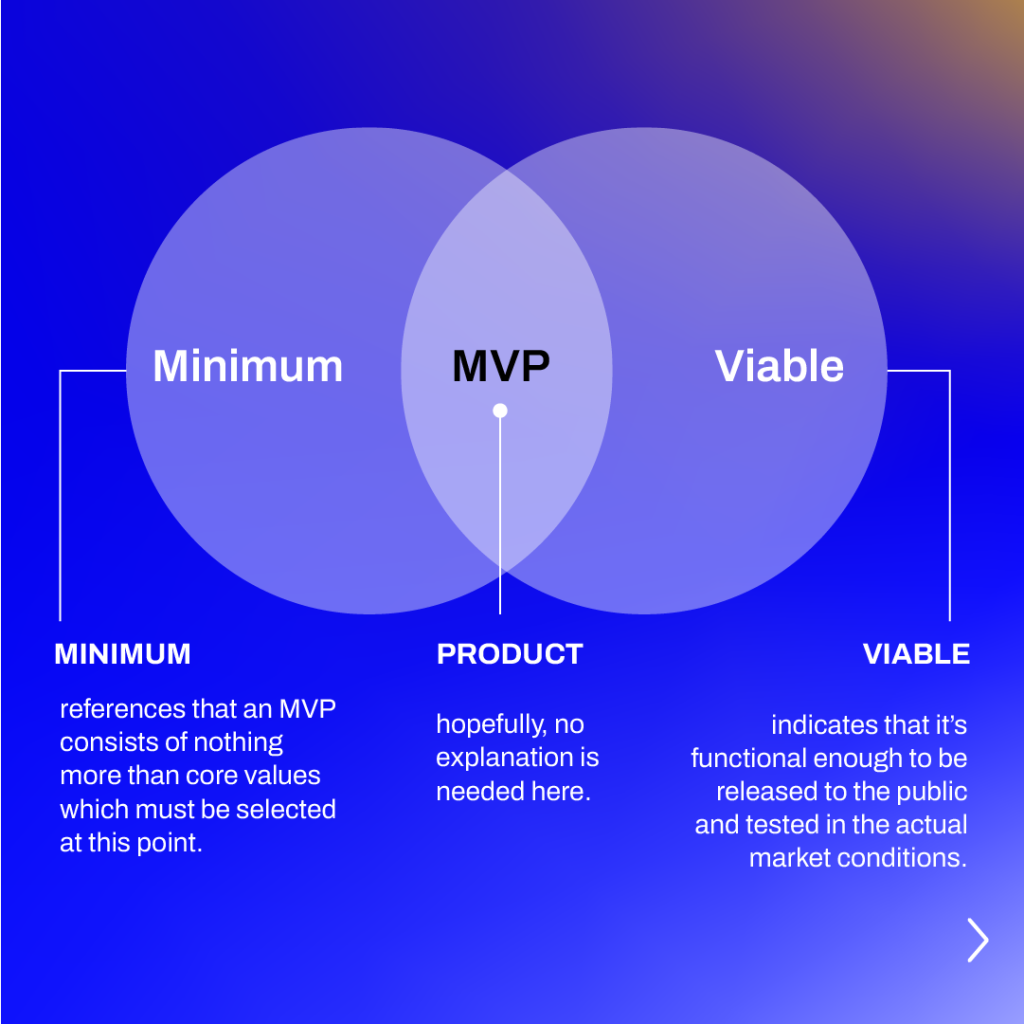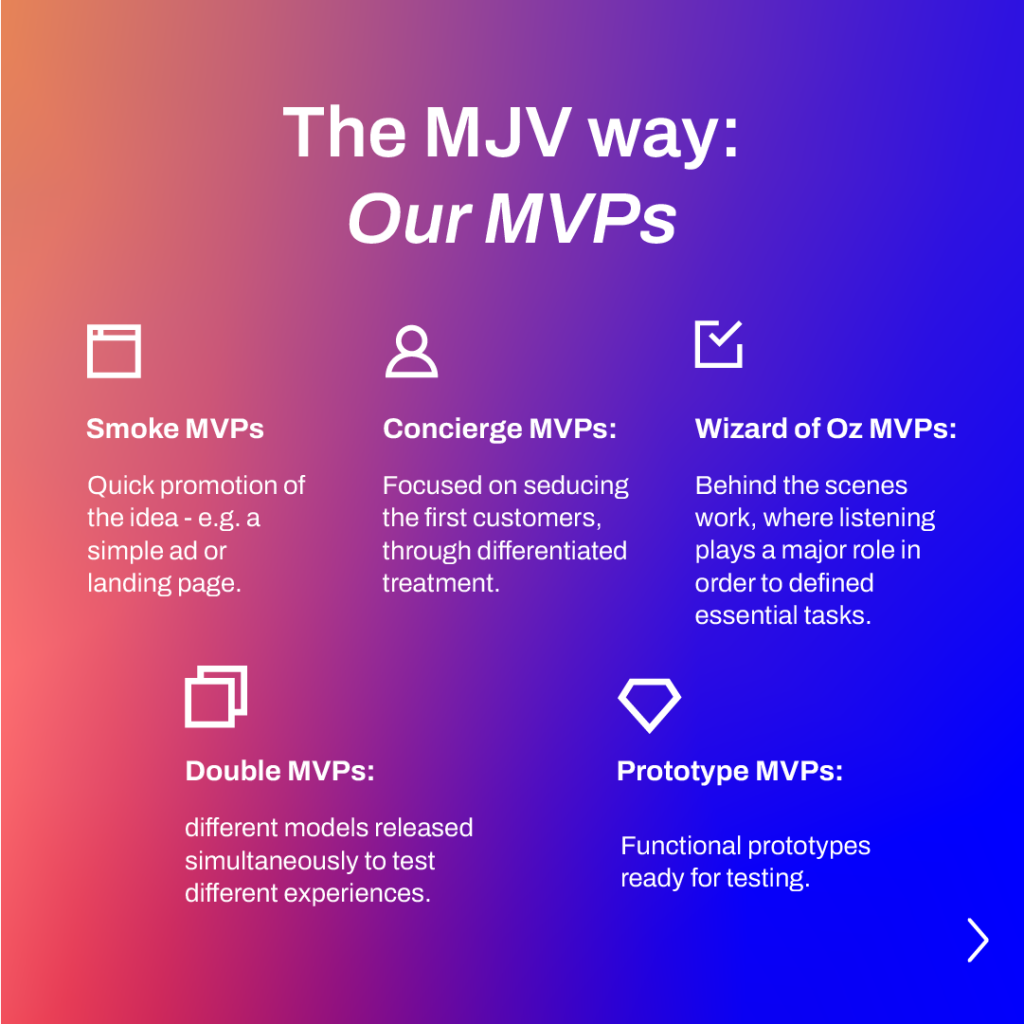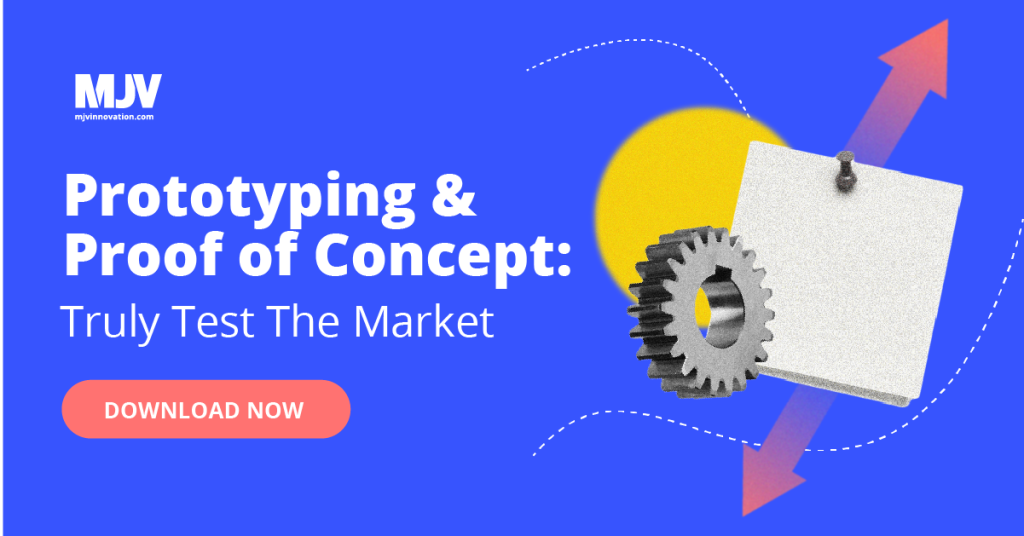Reduce your time-to-market with a Minimum Viable Product
An MVP is the simplest version of a product. It can help you avoid risks and provides a platform for product validation.
With constant changes and new technologies, staying up to date with market demands has become increasingly complex, but it is essential to staying competitive. A Minimum Viable Product (MVP) can help you conquer your competition.
The best way to stay ahead of the curve and put your company on the cutting edge of your sector is through testing and validating your product in a simple, fast, and cheap way before launching it on the market.
The answer sounds straightforward, but it isn’t. Read on to understand how MVPs work, how to build one, and what they can do for your company!
What is the Minimum Viable Product?

To explain what an MVP is, let’s give you an example of an everyday scenario that takes place in companies of all sizes – and which you’ve probably experienced in yours.
- You – or one of your colleagues – have an idea.
- The idea sounds good, but the manager is unsure.
“Is it worth taking the time to put this idea into practice? Can we afford the investiment? What if we don’t have the expected return?“
These kinds of barriers are present in every company, and for good reason, caution and skepticism are great risk mitigators. The real problem is letting questions like these keep you from trying out. That’s where MVPs come in.
MVPs are what separates ideas from execution; theory, from practice; the abstract from the concrete. They are the shortest possible bridge between these two extremes.
They are a form of prototyping framework, which allows you to bring your idea to life without committing to all the risks involved in creating and launching a new, unvalidated product. It not only helps you get started but also provides useful insights into future improvements.
6 Steps to Creating a MVP
Now that you understand what an MVP is and how it can help you, you may be wondering where to start.
For that, we created a very simple step-by-step guide for creating an MVP.
1. Get an idea
At this point, the idea needs to be concrete. It needs to be consolidated in your head. You need to have a value proposition ready for your product, understand how it will act in the market, and be very clear about where your profit will come from.
2. Get your team on board
You will need a small team to put your MVP together. And it’s vital that they are all on the same page.
This means that everyone needs to know the purpose of this idea, what it will serve, how to build it, which substitutions can be made, which cannot, etc.
3. Put it on paper
That’s literally all you have to do for this stage. Get your idea out of your head and put it down on paper in a way that anyone who picked it up could understand what it does, how it works, and why it exists. There’s no need to make a perfect drawing. You don’t need schematics at this point, just a sketch.
Drawing it out helps a lot. People respond and instinctually understand visual representations better than just text describing it.
4. Get it off the paper
It’s practice time. It’s time to give your idea substance in a simple, practical, fast, and cheap way. Anything goes at this stage. Make it out of cardboard if you have to, use a third-party program whatever you need to make it tangible.
5. Market time!
This is your MVP’s litmus test. At this point, you will understand if your value proposition truly matches up with the market.
Here, your MVP will answer the big question: does my idea justify the investment?
You have the option of launching the MVP to a restricted and controlled audience (for example, people who are already customers of a similar product in your company) or open it to the general public. There is no right or wrong – it’s just a matter of strategy.
6. Record & evaluate feedback
It is doubtful that your MVP is flawless. There are always adjustments to be made. So let’s break this point down into two parts:
Record everything. The more data, the better. With this, you will have a robust database on your product, which you can consult to help you make each version better than the last.
What about evaluating feedback? Well, is your product really ready for market? Has it reached its final form, or does it need more alterations?
A final advice:
- Tweak and do more testing – if they’re simple tweaks, it’s worth going to a V.2 and trying again. Even if your MVP is going to change drastically from the original, it’s easier to go back to square one and start over.
There are many forms of MVPs, and they have different pros and cons for each demand. We made an infographic explaining them. Access and download the infographic by clicking here.
Do’s and don’ts: 3 tips when creating a Minimum Viable Product
Do’s
Benchmarking: Knowing the market, your niche, customers, and competitors is critical to the success of your MVP and your product.
Creating parameters: Before you begin, be very clear about what works and what doesn’t. This makes it much simpler to interpret feedback and define what should be adjusted – and what shouldn’t!
Learning from mistakes: They can be your’s, your team’s, and even your competitor’s, but learning from mistakes helps save time, money, and effort.
Dont’s
Investing too much: Spending too much time, money, and resources on an MVP is not productive. It’s better to make multiple builds or MVPs than getting stuck on the perfect first build.
Testing locally: It’s not worth testing your MVP on yourself, your family, friends, acquaintances. This can cause a result that is not consistent with the market. Remember, the further away from you the test is, the better!
Clinging to an idea: It may seem like the best idea you’ve ever had, but if your MVP shows you that the concept for your product just isn’t useful, or won’t sell, don’t chase it.
Why is a MVP so critical to your product’s success?
Constructing a minimum viable product for validating an idea is often used within Lean. Lean deals directly with waste reduction in corporations. Less is always more.
Lean’s central philosophy is to identify and act on waste. Pinpointing where it exists and offering opportunities for improvement, with substantial impacts on the business equation.
This ties in directly with MVPs. It’s the perfect method for validating ROI even before launch.
Do I really need a Minimum Viable Product?
We know that innovating can seem daunting at first. Going from functional and traditional products to uncertain ideas terrifies many managers, but innovation is a competitive necessity.
The value of innovation for business is indisputable now more than ever. Bringing innovation to your company’s core business has become a prerequisite for survival.
This new scenario – which is not even that new anymore – was led by startups, which incorporate technology into their values, mission, and purpose. Nothing says “startup” more than testing, validating, measuring, improving, replacing, and restarting.
The concept of Minimum Viable Product had its origins within startups, but believe us: its value applies to any project, in any sector.
Still struggling to take your ideas off the ground? Why don’t you take a look at our ebook on Prototyping? Download now and get your free copy.


